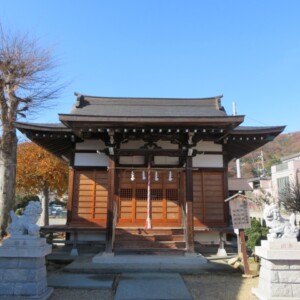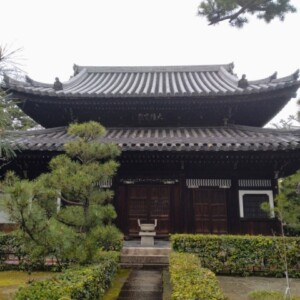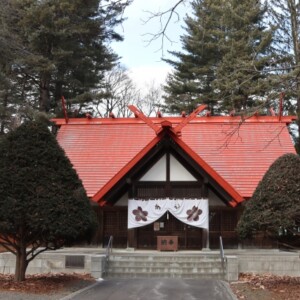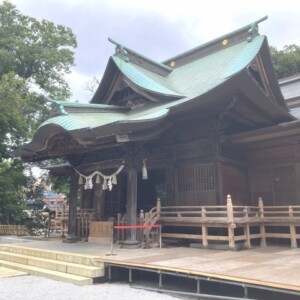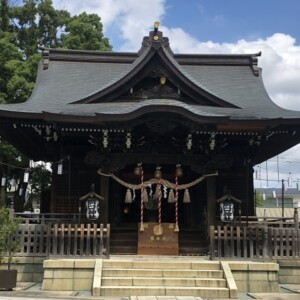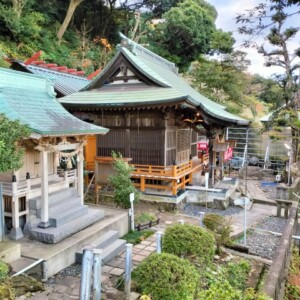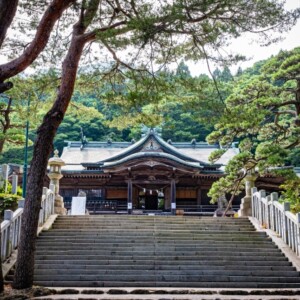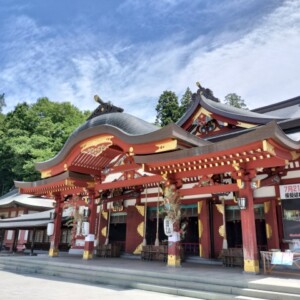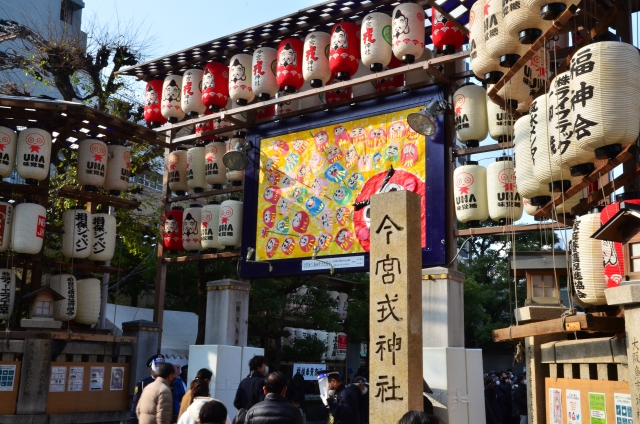
Imamiya Ebisu Shrine|Complete guide to the history, highlights, and worship information of this historic shrine
Imamiya Ebisu Shrine quietly stands amidst the bustle of Osaka’s Minami district. For more than 1,400 years, the people of Osaka have been familiar with this historic shrine as “Ebessan,” the god of business and prosperity. Every January, Tokaebisu attracts about one million visitors, and the lively scene of people seeking fukuzasa (lucky bamboo branches) is known throughout the country as Osaka’s New Year’s tradition.
Outline and basic information about Imamiya Ebisu Shrine
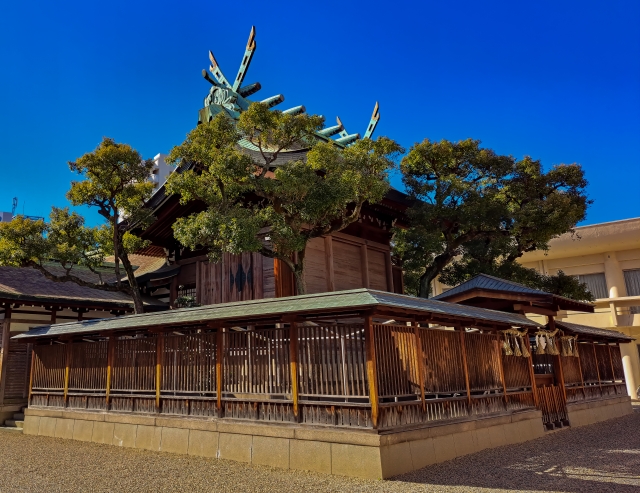
Imamiya Ebisu Shrine is located in Emisu-Nishi 1-chome, Naniwa-ku, Osaka City, and is said to have been founded in the 8th year of Emperor Suiko (600 AD). Today, the shrine plays a central role in local beliefs as an annexed shrine of the Jinja Honcho (Shinto Shrine Headquarters).
History and Origin
Imamiya Ebisu Shrine was founded in the 8th year of Emperor Suiko (600 A.D.), when Prince Shotoku built Shitennoji Temple, and was enthroned as the guardian deity of the western part of the temple. Initially, the shrine was built as the guardian deity of Shitennoji Temple, but its role evolved greatly over time.
In ancient times, this area was located along the coast, where “markets” were held to barter products from the sea, villages, and fields, and Ebisu-san was enshrined as the guardian god of these markets. This became the basis for the later belief in Ebisu as a god of prosperity.
During the Toyotomi period, the common people’s faith in Ebisu-sama became even stronger, and Toyotomi Hideyori ordered Katagiri Katsumoto to build the shrine as a contractor. In the Edo period (1603-1867), Osaka became even more prosperous as a commercial town, and Imamiya Ebisu Shrine came to be revered as a god protecting Osaka’s commerce.
Gods and Benefits
The main deities of Imamiya Ebisu Shrine are Amaterasu, Kotoshironomikoto, Susanohasun, Tsukuyomi, and Wakuhinomikoto, and Kotoshironomikoto is especially worshipped as Ebisu.
Kotoshironushi” is widely known as the god of prosperity and business, but he has also been worshipped since ancient times as a deity who controls the spirit of speech, in other words, wisdom and language. He is also revered as the guardian deity of young children, and is believed to provide a wide range of benefits.
Originally, Kotoshironushi was the god of fishery, but over time, he came to be widely worshipped as the god of prosperity, good fortune, and good harvest.
Highlights of Imamiya Ebisu Shrine
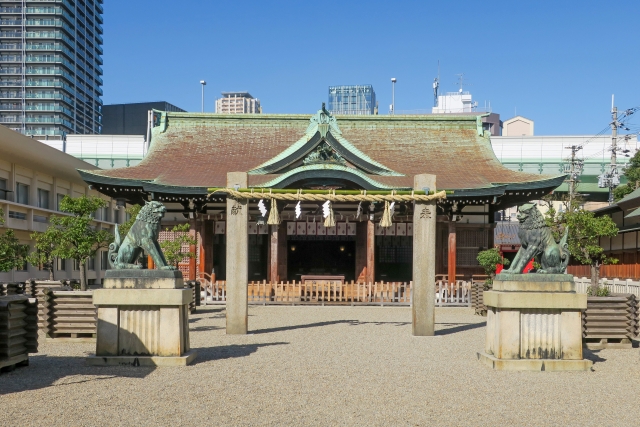
Despite being an urban shrine, Imamiya Ebisu Shrine has a unique charm and cultural value that has been cultivated over a long history. Although the shrine grounds are not large, they reflect the weight of over 1,400 years of history and Osaka’s commercial culture.
Architectural and Structural Attractiveness
The shrine building of Imamiya Ebisu Shrine was once destroyed by fire during the war, but was rebuilt after the war. The main shrine building was built facing south, which has an interesting anecdote. The main shrine building faces south when viewed from Semba, the center of business in the Edo period, so a unique way of praying was created in the hope that the shrine would face this way at least during festivals.
Gongs are set up in the precincts of the shrine for worshippers to ring, a unique facility not often seen at other shrines. During Tokaebisu, the entire shrine grounds are filled with worshippers seeking fukuzasa, creating a lively atmosphere that is completely different from that of normal times.
Atmosphere and Features of the Shrine’s Precincts
Hirota Shrine (Osaka City) is located approximately 170 meters to the north and is considered to be closely related to the shrine. This is similar to the location of Nishinomiya Shrine and Hirota Shrine in Nishinomiya City, Hyogo Prefecture, and is an interesting point of commonality in the Ebisu faith.
Although the shrine grounds are relatively compact, there are many ways to accommodate the approximately one million worshippers during Tokaebisu. The shrine is designed to accommodate a large number of visitors safely, including the route of worship and the place where fukuzasa (lucky bamboo branches) are given out.
Value as an Osaka City-designated Cultural Property
Imamiya Ebisu Shrine was designated as a cultural property by Osaka City in 2013, and its historical and cultural value is officially recognized. In particular, the festival of Tokaebisu and the culture of fukuzasa (lucky bamboo branches) are important intangible cultural assets that symbolize Osaka’s commercial culture.
The oldest extant guide to Osaka, “Ree-bun-bune,” dated 1675 (Enpo 3), depicts a scene from the Tokaebisu festival, which shows the high historical value of the festival that has continued since the Edo period. In the field of literature and art, Konishi Raizan, a haiku poet from the early Edo period, wrote about Imamiya in his collection of haiku, and Ota Shokusanjin wrote about Toka Ebisu in his travelogue in the mid-Edo period.
Visiting and Worship Information
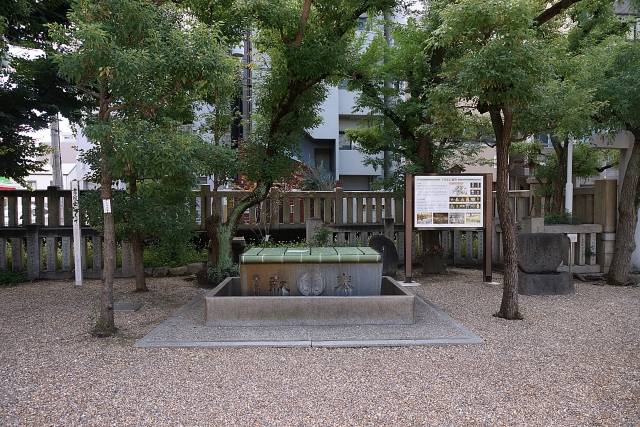
Imamiya Ebisu Shrine is open to visitors throughout the year, and attracts many people who wish for prosperous business and good fortune. The unique worship rituals and annual events are especially attractive to visitors.
Worship Etiquette and Manners
At Imamiya Ebisu Shrine, as at most shrines, visitors are required to purify themselves at a water fountain before visiting the shrine. However, Imamiya Ebisu Shrine has a unique way of praying. It is called “Ura-mairi” (reminder mairi).
In this method, after praying at the front main hall as usual, visitors go around to the back side of the main hall and strike the gongs to pray again. This method of praying was born out of the Osaka idea of “reminding” the deity. Since Ebessan is said to be a little deaf, it is believed that by ringing the gong from nearby, the deity’s wishes will be heard.
It is also said that the practice originated from a wish that Ebessan-san would at least face this way during the festival, since the main shrine faces south when viewed from Semba, the center of business in the Edo period. This backward approach has become a specialty of Imamiya Ebisu Shrine, and is a ritual that visitors should not forget to experience when they visit the shrine.
Annual and Seasonal Events at Tokaebisu
The most important ritual at Imamiya Ebisu Shrine is Tokaebisu. Held for three days from January 9 to 11 every year, it is a New Year’s tradition in Osaka that attracts about one million visitors.
The 9th is called “Yoebisu” (evening Ebisu), the 10th “Hon Ebisu” (main Ebisu), and the 11th “Norikori Ebisu” (remaining Ebisu) or “remaining good fortune”. The lucky bamboo branches can be decorated with lucky charms such as straw bags, money bags, suehiro, koban, chogin, koboshi, mortar, hammer, rice bales, and sea breams, and can be decorated by lucky girls.
In summer, “Kodomo Ebisu” is held on the evenings of July 22 and 23. This event started because Kotoshironushi God is also believed to be a guardian god for young children. Snow slopes and snow slopes are set up at this event, which is popular among parents and children as a rare opportunity to play in the snow in summer.
The “Manzai Newcomer Competition” is also held during this period. Since the Middle Ages, kugutsu-mawashi (puppeteers) have been going around preaching the divine virtues of the god Ebisu, who is also regarded as the god of song, dance, and music, and the event has become a gateway to success for manzai performers.
Red Seal and Charm Information
Imamiya Ebisu Shrine offers two types of red seals: a regular red seal and a special red seal for the Tokaebisu period. The regular red seal has “Imamiya Ebisu Shrine” in the center, “Settsu Imamiya Ebisu Shrine” in the lower left, and a red seal with a sea bream in the upper right. The Tokaebisu limited edition red seal is specially designed with the characters “Tokaebisu” and a picture of a lucky bamboo branch.
There are also five seasonal red seals available each year, with designs for spring, summer, fall, winter, and Tokaebisu. The number of red seals awarded is limited, so it is recommended to check the official website for details.
As is typical of a shrine dedicated to business prosperity, there is a wide selection of good luck charms such as lucky koban, lucky coins, and uchide no kozuchi (a small hammer that strikes the ground), all of which are related to business prosperity and increased money-making ability. Especially popular are the “fuku koban” (300 yen), which is believed to keep money in one’s wallet, and the large koban (1,500 yen), which is attached to a lucky bamboo branch. Also, “Fukumusume-mamori,” a charm to pray for the healthy growth of children, is also awarded.
The hours for awarding red seals and charms are from 9:00 a.m. to 5:00 p.m., extended to 10:00 p.m. during the Tokaebisu period.
Access and Usage Information
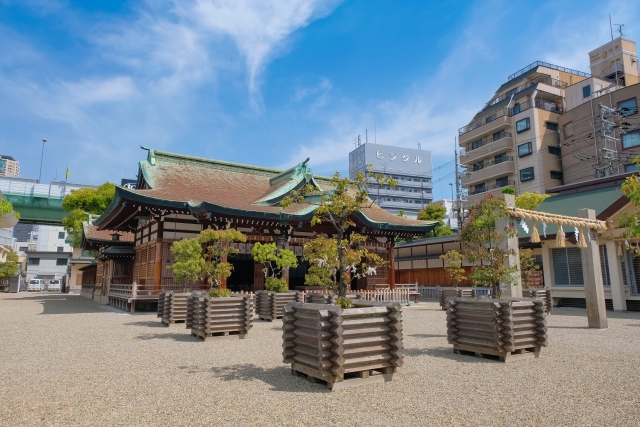
Imamiya Ebisu Shrine is located in the center of Osaka City and is accessible by multiple train lines. Public transportation is convenient, with several stations within walking distance.
Transportation Access
Access to Imamiya Ebisu Shrine is very convenient, with the following train lines available
The closest is “Imamiya Ebisu Station” on the Nankai Koya Line, a short walk from the station. It is also accessible from Exit 3 of Daikoku-cho Station on the Osaka Metro Midosuji Line, a 5-minute walk to the east, and from Exit 5 of Emisucho Station on the Osaka Metro Sakaisuji Line, a 5-minute walk to the west.
It is also an approximately 5-minute walk west from Ebisucho Station on the Hankai Line, an approximately 10-minute walk north from Shin-Imamiya Station on the JR Line, or transfer to the Nankai Koya Line to use Imamiya Ebisu Station.
Since traffic regulations will be enforced in the area during Tokaebisu, public transportation is strongly recommended. It is also within walking distance from downtown areas such as Shinsaibashi and Namba, making it possible to visit the shrine in conjunction with sightseeing.
<Address> 1-6-10, Emisu-Nishi, Naniwa-ku, Osaka City, 556-0003, Japan
Hours of visitation and parking information
The Imamiya Ebisu Shrine is open from 6:00 am to 5:00 pm. However, only the south side gate is open until 10:00 p.m. The main shrine is open from 6:30 a.m. to 5:00 p.m.
The awarding office is open from 9:00 a.m. to 5:00 p.m. for red seals and amulets, and from 9:30 a.m. to 4:30 p.m. for prayer services. Prayers are offered at any time, but reservations are recommended.
Free parking for approximately 10 cars is available on the north side of the temple grounds, on the west side (right hand side) of the temple grounds after entering the grounds from under the overhead Hanshin Expressway. However, it is available only during the hours of worship, and is not available on Saturdays and Sundays in January, July, and November, and during the month of December. Especially during and around the Tokaebisu period, the parking lot is not available due to traffic restrictions around the shrine.
There are several coin-operated parking lots in the vicinity, but they are very crowded during the Tokaebisu period, so public transportation is the most reliable option.
Reference sites
Imamiya Ebisu Shrine Official Website: https://www.imamiya-ebisu.jp/



